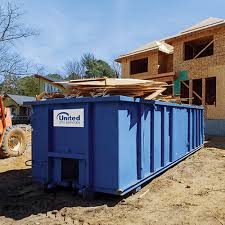Homeowners today are constantly looking for creative ways to refresh their kitchens without committing to expensive renovations. One of the most practical and budget-friendly solutions is kitchen worktop wrapping, a modern design trend that transforms your counters with style, speed, and affordability.
What is Kitchen Worktop Wrapping?
Kitchen worktop wrapping is the process of covering your existing countertops with a durable adhesive film, usually made from vinyl or laminate. Instead of tearing out old worktops, a wrap is applied directly on top, giving the surface a brand-new look.
These wraps are available in various finishes, from marble-inspired designs to sleek matte textures, allowing homeowners to achieve a high-end aesthetic without the high-end price tag. The application process is relatively straightforward, but precision is key to ensuring a seamless, bubble-free result.
Benefits of Wrapping Your Kitchen Worktops
Worktop wrapping has gained popularity because it offers several advantages over traditional countertop replacement.
- Cost-Effective: Wrapping costs significantly less than buying and fitting new worktops.
- Customizable: With hundreds of patterns and textures—such as stone, granite, or wood—you can easily match your desired kitchen style.
- Quick Transformation: Unlike replacement, which can take days, professional wrapping can often be completed in a matter of hours.
- Eco-Friendly Choice: Wrapping reuses your existing surfaces, reducing construction waste and supporting sustainable renovation practices.
- Non-Permanent Solution: If you change your mind later, wraps can be removed or replaced, offering design flexibility.
For families or renters seeking a stylish update without major investment, these benefits make wrapping an attractive option.
Popular Materials Used for Worktop Wrapping
The type of material you choose impacts both aesthetics and durability.
- Vinyl Wraps: The most popular choice for their affordability, variety, and ease of application.
- Laminate Films: Provide a slightly thicker, more durable layer that resists scratches and everyday wear.
- Heat- and Moisture-Resistant Wraps: Designed for kitchens where cooking and water exposure are constant. These wraps maintain integrity under higher temperatures and resist warping.
High-quality films often include textured finishes that mimic real wood or stone, creating an authentic look that elevates your kitchen’s design.
Kitchen Worktop Wrapping vs Replacement
Replacing countertops often involves removing old surfaces, sourcing new materials, and paying for installation—all of which add up in terms of time, effort, and money. Wrapping, on the other hand, is minimally disruptive and usually finished within a day.
While replacement may offer longer durability for heavily used kitchens, wrapping delivers a balance of affordability and style, making it ideal for budget-conscious renovators or temporary upgrades.
How to Wrap Kitchen Worktops (DIY vs Professional)
Many homeowners consider a DIY approach to save money. The process involves:
- Cleaning the surface thoroughly
- Cutting the wrap to size
- Applying it carefully to avoid bubbles and creases
- Using tools like squeegees and heat guns for smooth finishing
However, DIY applications can be tricky, especially on corners and edges. That’s why many choose professional installers. Experts not only guarantee a flawless finish but also ensure the wrap lasts longer.
For instance, a homeowner in London wrapped their outdated laminate counters with a matte black vinyl. A professional installer completed the job in half a day, instantly modernizing the kitchen at a fraction of replacement cost.
Maintenance and Care Tips
Wrapped worktops are easy to maintain with simple care practices.
- Use mild soap and water for cleaning instead of abrasive cleaners.
- Avoid placing hot pans directly on the wrap—always use trivets or heat pads.
- Wipe spills quickly to prevent staining.
- Use chopping boards rather than cutting directly on the surface.
Following these steps keeps your wrap looking fresh and extends its life for years.
Final Thoughts
Kitchen worktop wrapping offers homeowners a stylish, affordable, and eco-friendly way to transform their kitchens. With the right materials and proper care, it’s a renovation solution that balances design flexibility with budget-conscious practicality.
FAQs
Q1: How long does kitchen worktop wrapping last?
High-quality wraps typically last 3–7 years depending on use and maintenance.
Q2: Can I wrap old or damaged worktops?
Yes, but the surface must be clean and smooth. Severe cracks or chips may need repairs before wrapping.
Q3: Is worktop wrapping heat resistant?
Most wraps resist mild heat, but hot pans or pots should never be placed directly on the surface.
Q4: Can I remove a wrap later?
Yes, wraps are removable and can be replaced with a new design if desired.
Q5: Is wrapping cheaper than replacement?
Yes, wrapping usually costs a fraction of the price of replacing countertops.
Q6: Can I wrap worktops myself?
DIY is possible, but professional installation ensures durability and a seamless look.
Q7: Do wrapped surfaces look real?
Modern wraps are designed with textures and patterns that mimic stone, wood, or granite convincingly.


